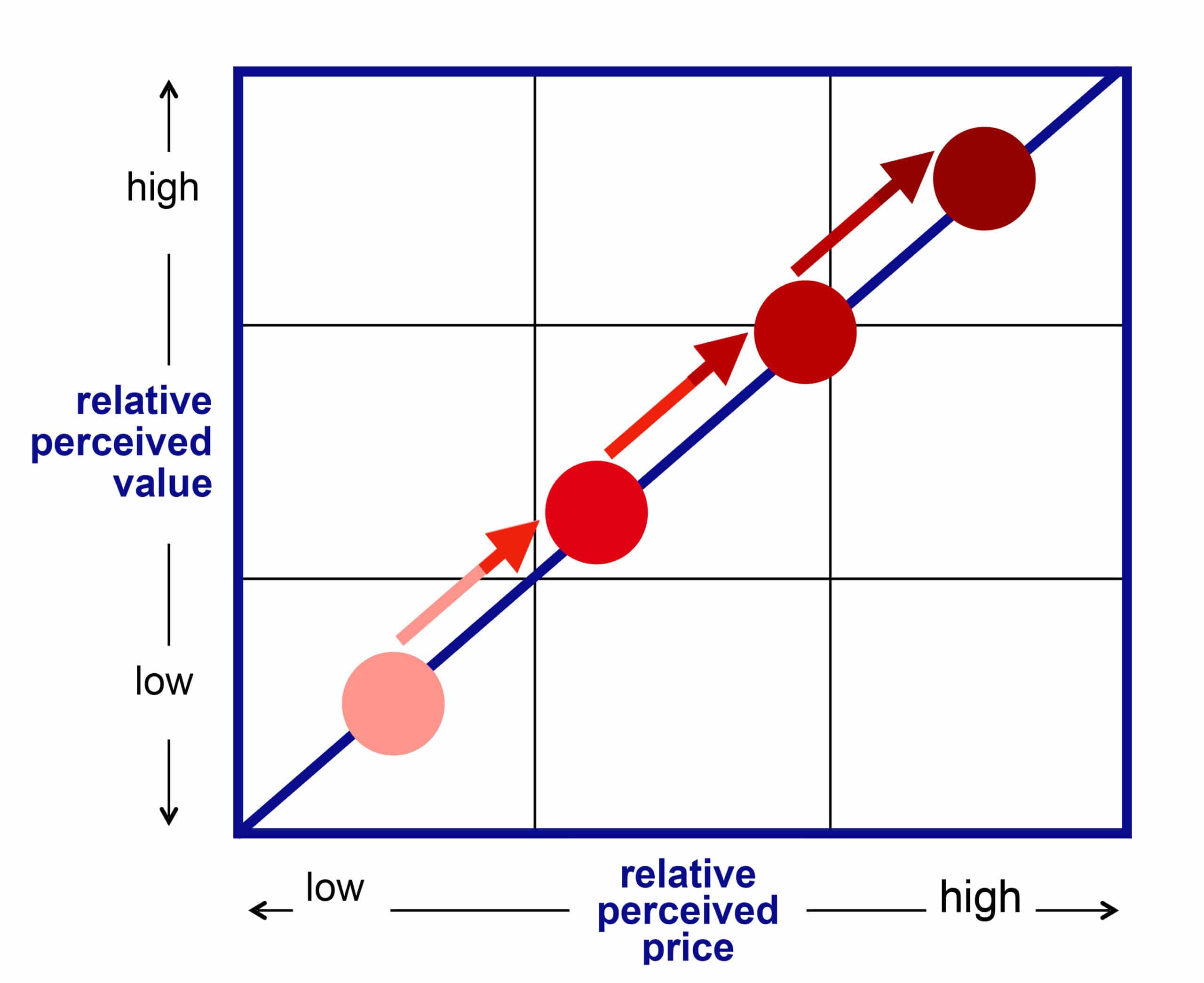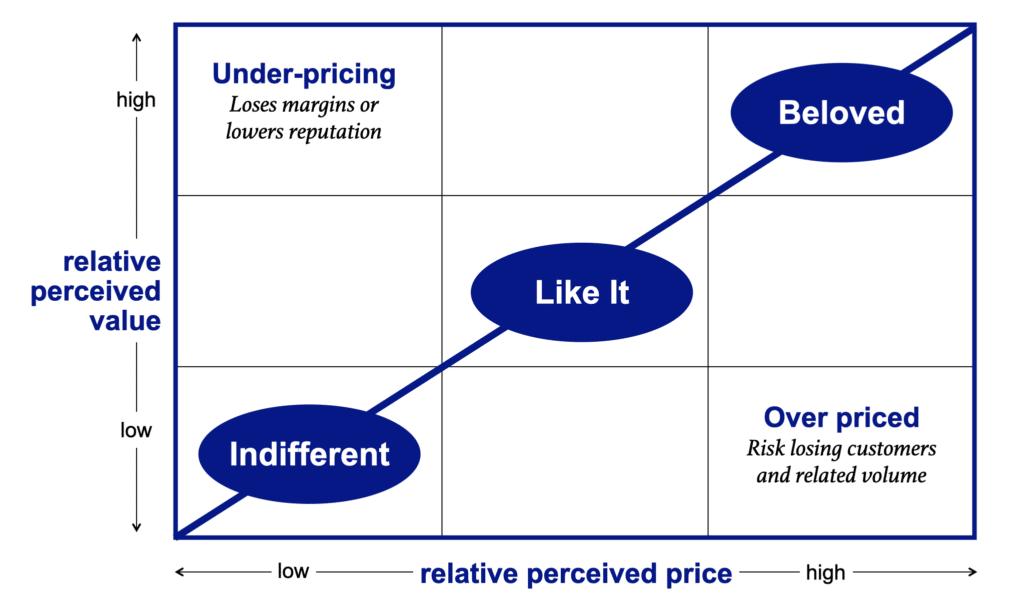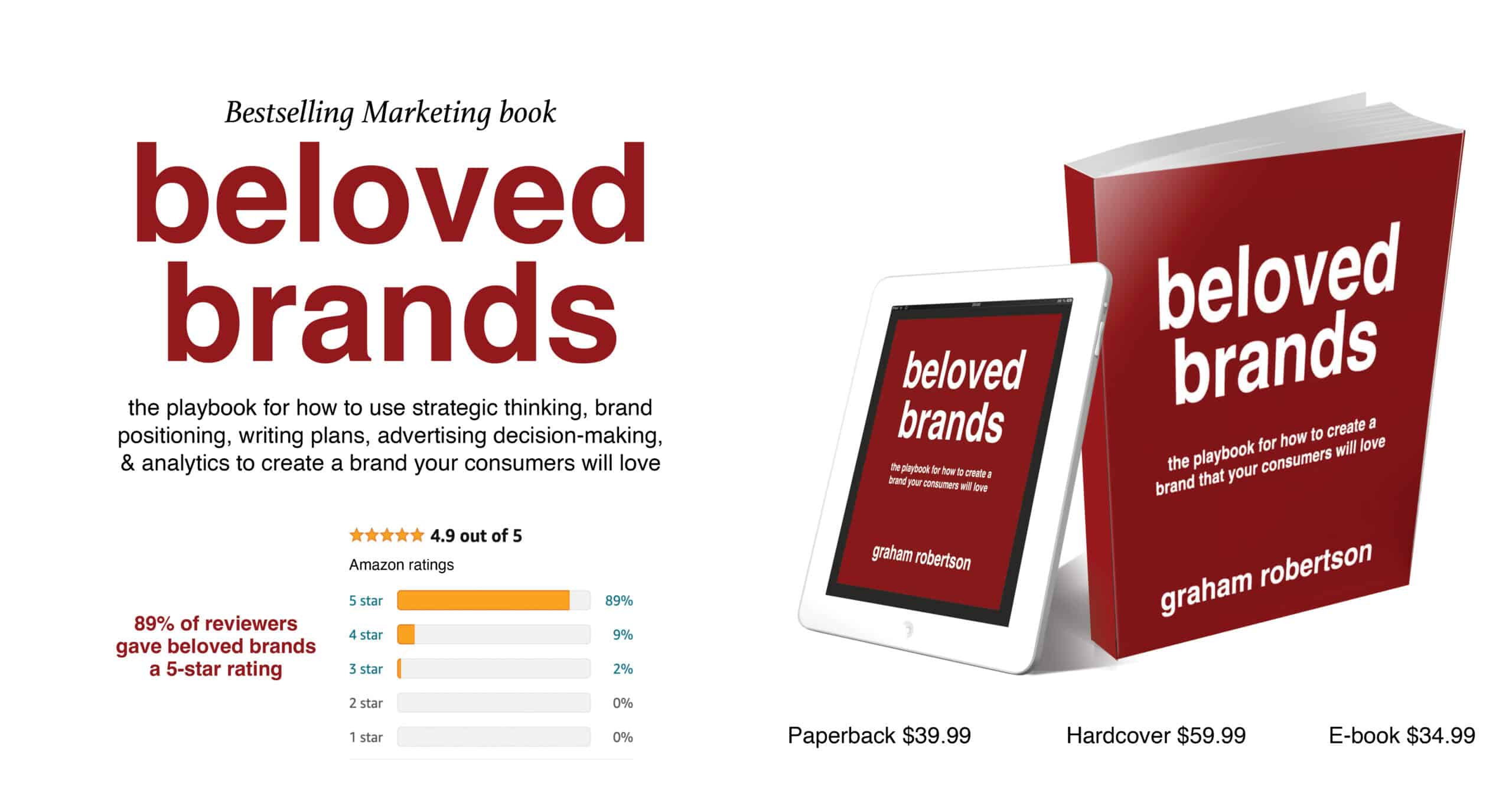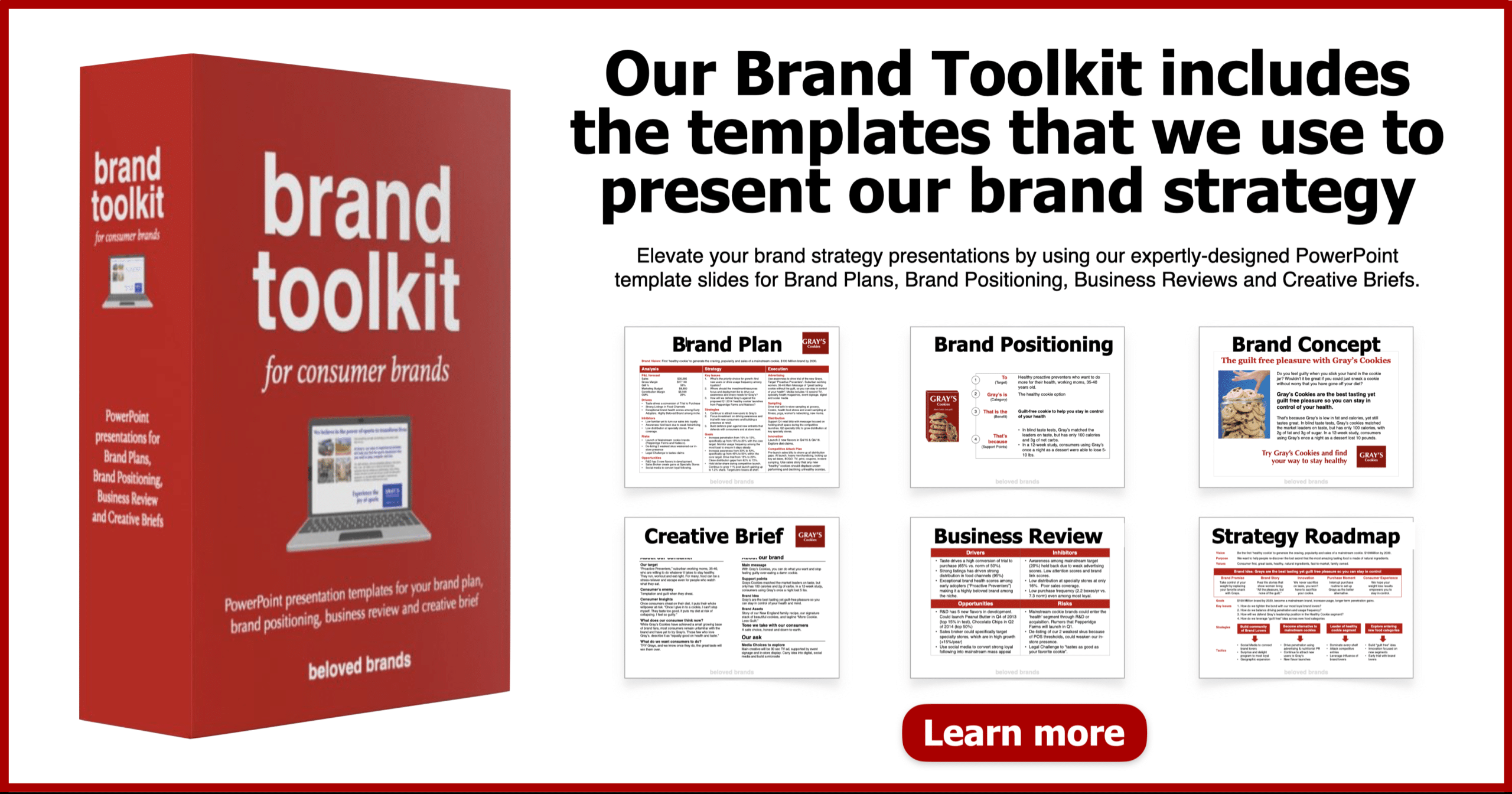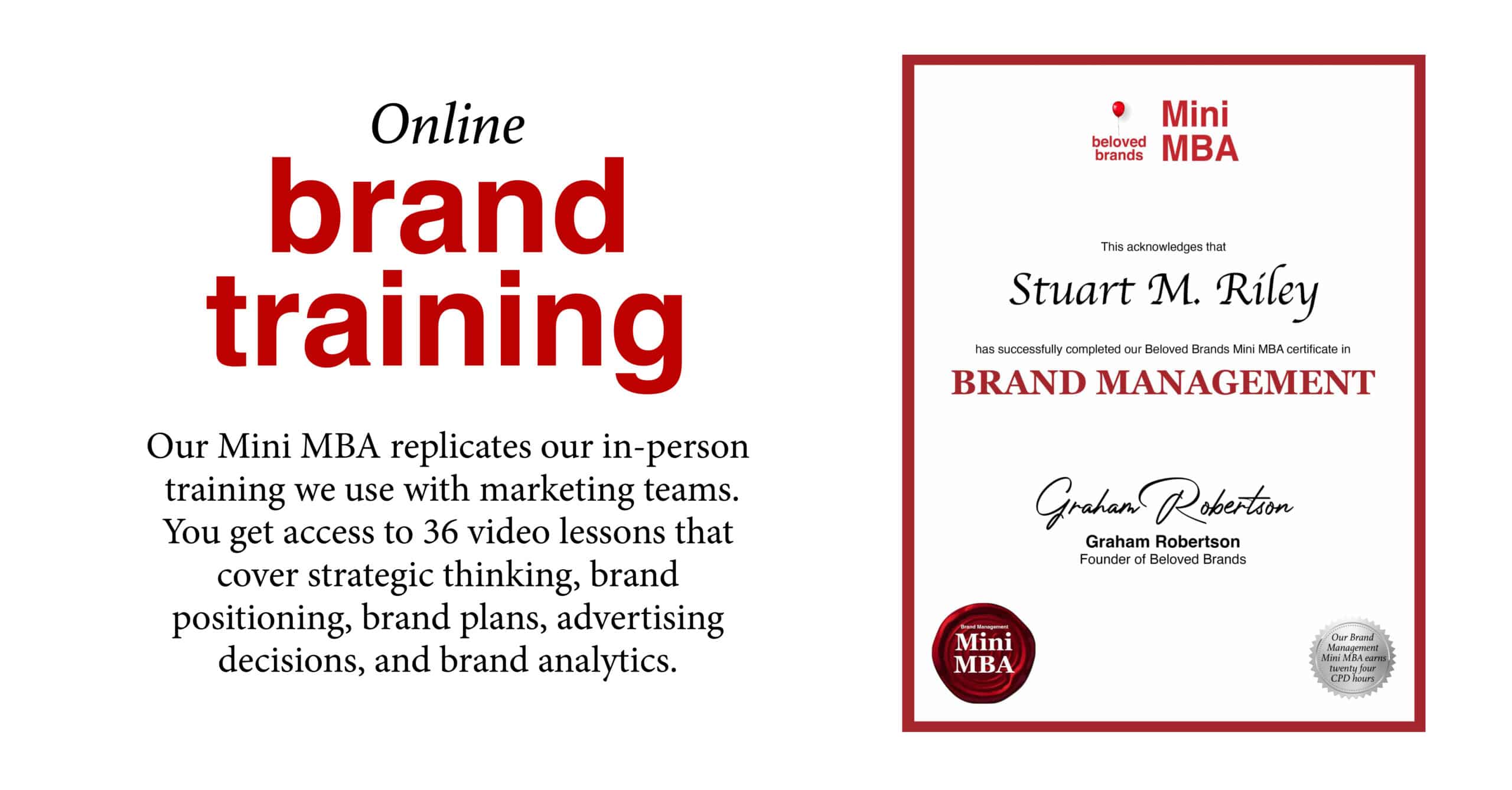Your pricing strategy plays a significant role in driving your brand growth. You need to treat pricing as a continuous process to project your brand positioning and stay competitive. Match your pricing strategy to your overall business strategy and financial objectives. Think of how you set up your business to make money and the role price plays in delivering those results.
Look back to the Strategic ThinkBox, by starting with your brand positioning as to how customers value your main benefits relative to your brand’s perceived product quality, added services, and the tightness of the customer connection.
While many marketers think of price as a defensive response to counter inflation or a competitive reaction at the retail shelf, the smartest brand leaders use price as a weapon to drive brand value.
To illustrate, click on the chart above to see details.
Price Value
Increasing the perceived price:
Your pricing strategy starts with understanding the brand’s price/value relationship and looking for ways to increase the perception of value. In the chart above, we use perceived value and perceived price with the diagonal line representing where the two find their equilibrium. Every base product price starts at the going commodity price (pink circle). We can move up the curve to a higher price (darker red circles).
- Perceived quality of the products: Explanation of the product benefits match up to the customer’s needs. Adding emotional benefits go beyond commodity.
- Reputation for expertise: Re-enforced by experience, past usage or reviews/referrals for a similar situation.
- Perceived quality of the services: Go beyond product to go faster, easier, smarter by replacing activities the customer can’t do or does not want to do.
- Make your customer look better: Add perceived value to their brand, or making them look smarter.
- Happy customers: Happy experiences builds trust that allows customer to open up emotionally. With each happy experience, you can add cached value.
When you find a unique position, which you know motivates consumers, and can differentiate you from competitors. Use the motivation of your positioning and the delivery of amazing experiences to tighten the bond with your consumers.
An indifferent brand has low perceived value and will end up with a much lower price point. A beloved brand can use its emotional connection to drive perceived value and ensure the price premium is perceived as good value. For instance, consumers are undoubtedly willing to pay $5 for a Starbucks latte, $750 for an iPad or $100,000+ for a Mercedes. The same consumers will price shop on brands where they have no feelings. A beloved brand has an inelastic price, which means the quantity demanded does not change very much when the price changes.
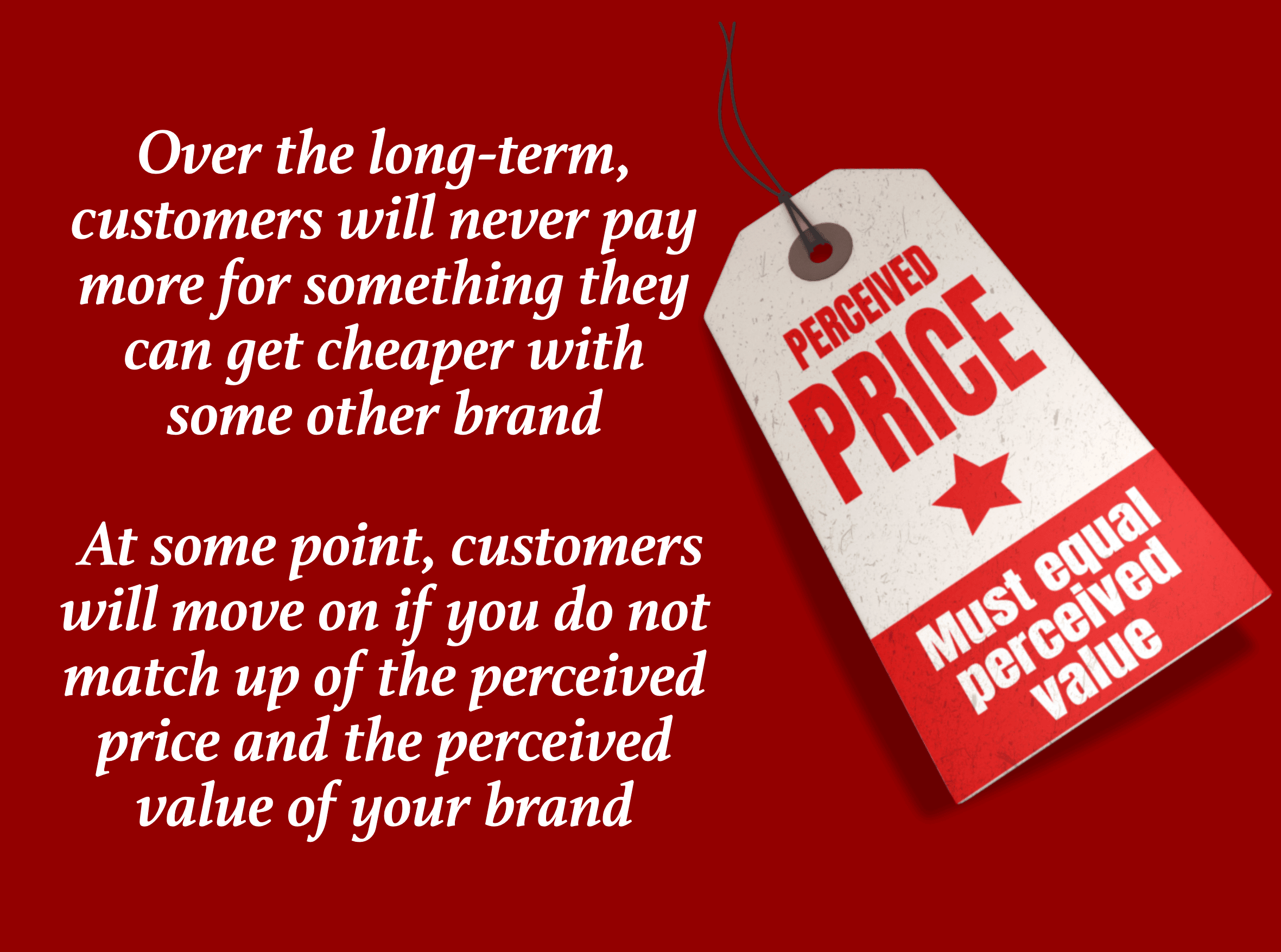
Pricing strategy
Price increase
Simply put, brands can execute a price increase when the market or consumers allow the brand to do so. A beloved brand will have an easier time pushing through a price increase as it can use the power of its brand versus consumers, competitors, or channels. When pushing a price increase through retail channel partners, brands usually require proof that the new price will work or that product costs have gone up. Factors that help the brand story include the health of the brand and market.
Price decrease
Use a price decrease when battling a competitor, in reaction to sluggish economic conditions or retail channel pressure. You can also use an aggressive price decrease when you have a cost advantage, whether that’s manufacturing, materials or distribution. When you have that cost advantage, it may make sense to deploy a lower price to deplete the resources of your competitor.
Price changes always carry a risk of a competitive overreaction. Always consider various potential competitive reactions when doing your financial analysis. Be careful. As difficult as it is to implement a price change, it is almost impossible to change it back.
Trade the consumer up or down
Another strategy is to create a range of products at various price levels, with a good / better / best approach that allows the brand to reach up or down to a new segment of consumers. Make sure that you are doing this for the right reason or it could backfire on you.
Trading consumers up on price
Make sure your brand can carve out a meaningful difference to create a second or third tier, so consumers can see an apparent reason to move up. Many brands will deploy a good/better/best approach to pricing. When your brand secures trust or a bond with the consumer, it will be easier to use your brand reputation and product performance to move loyal consumers up to the next level.
Trading consumers down
When the brand sees a potential unserved market, it can trade consumers down when the move brings minimal damage to the brand image or reputation. In a tough economy, creating a lower-priced set of products can be a smarter strategy than lowering the overall price of your main brand. Once the economy bounces back, you can discontinue the lower-priced product option.
Adding value to products
What the marketer can do to add value
- Use claims and the emotional benefits that explain the value of your products
- Create a brand idea helps positioning your brand and build a reputation
- Work with sales to explain the quality of the added services
- Explain what you add so that your customer can pass that on to their end customers
- Know who your best customers are, and why they are happy. Then send reenforcing message to keep happy.
Pricing management
Operationalize pricing within your team. Create a ‘pricing team’ with defined roles and processes to follow between sales, marketing, finance, and forecasting. Understand market dynamics, especially with a fluctuating price market. Designate someone to maintain all pricing information and share to make the team smarter. Gather specific intelligence on customers and competitors to know each business model and specific financial issues impacting price levels. Follow a consistent process with shared decisions.
Pricing execution
Implement pricing in the market by understanding price elasticity seasonality, geography, customer types, and benefits offered. Use a good/better/best strategy. When pressured to offer a lower price, you can offer a lower product/service level. Consistent messaging and behaviors with pricing to ensure the customers understand your strategy. If you are a higher quality product and charge a 10% premium, always be a 10% premium. Define price corridors by product, using lead product pricing or total overall cost that you can explain and quantify.
Managing pricing
Build a pricing system to monitor pricing corridors, changes to elasticity, margin requirements, testing price levels through win/losses. Set price ranges based on volume, services offered, customer types. Stay aware of market pricing dynamics relative to your current customers to ensure your prices stay within the range to avoid them going to market.
Marketing economics
The economics for how a beloved brand turns brand love into profit
Driving demand gives your brand the ability to drive the price up, and higher quantities provide better economies of scale to lower your costs. With higher prices and lower costs, you can drive higher margins.
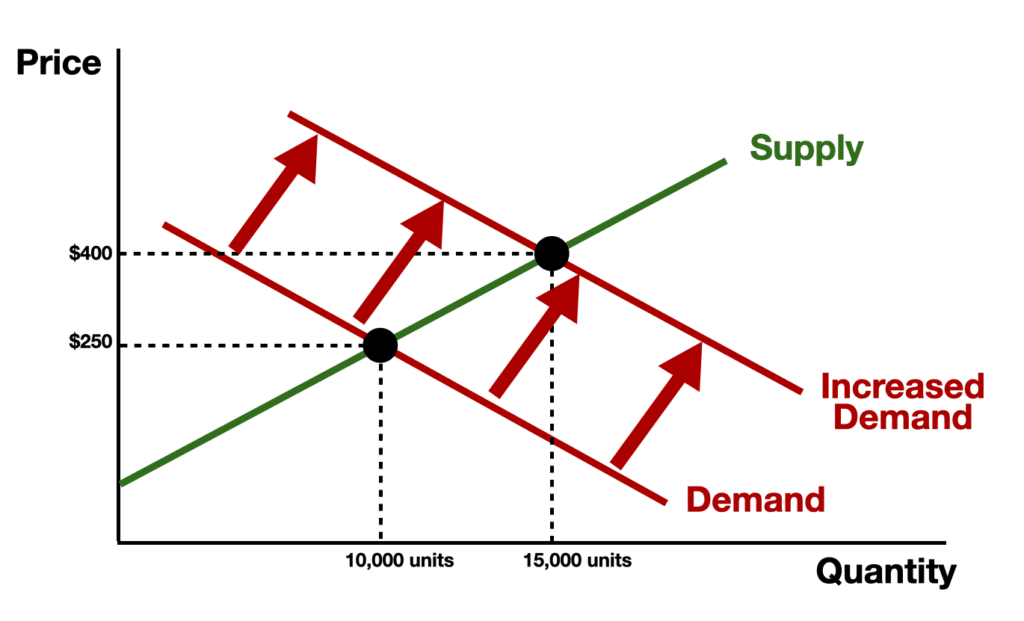
To illustrate, click on the chart above to see details.
Price elasticity can be defined as the percentage change in quantity demanded of a product in response to a one percent change in its price.
A high elasticity means that consumers are sensitive to changes in prices and will reduce their consumption when prices increase. Low elasticity means that consumers are less sensitive to changes in prices, so an increase in price will not result in much reduction in consumption or demand for the product.
The accounting for how a beloved brand turns brand love into profit
Most beloved brands can use their loyal brand lovers to command a premium price, creating a relatively inelastic price. The weakened channel customers cave in during negotiations to give the brand richer margins. Satisfied and loyal consumers are willing to trade up to the next best model. A well-run beloved brand can use their high volume to drive efficiency, helping to achieve a lower cost of goods structure.
Not only can beloved brands use their growth to drive economies of scale, but suppliers will cut their cost to be on the roster of the beloved brand. The beloved brand will operate with much more efficient marketing spend, using their power with the media to generate lower rates with plenty of free media. Plus, the higher sales volumes make the beloved brand’s spend ratios much more efficient. The consumer response to the marketing execution is much more efficient, giving the brand a higher return on investment.
To illustrate, click on the chart above to see details.
Beloved brands use higher shares of a bigger market to drive higher volume
The beloved brands use their momentum to reach a tipping point of support to drive higher market shares. They can get loyal users to use more, as consumers build the beloved brand into life’s routines and daily rituals. It is easier for the beloved brands to enter new categories, knowing their loyal consumers will follow. Finally, there are more opportunities for the beloved brand to find more uses to increase the number of ways the beloved brand can fit into the consumer’s life.
M A R K E T I N G B O O K
b2b brands
the b2b playbook for how to create a brand your customers will love
As a B2B marketer, you know that the key to driving growth is a strong brand. But how do you develop and execute a winning B2B brand strategy? Look no further than the B2B Brands playbook.
Prepare to think differently about your B2B brand strategy with B2B Brands. We want to challenge you with thought-provoking questions and take you through our process for defining your brand positioning. Our goal is to expand your mind to new possibilities for your brand by using real-life examples of successful B2B brand positioning strategies.
We’ll start by showing you how to create a brand plan that’s easy for everyone to follow, ensuring that all stakeholders understand how they can contribute to your brand’s success. Moreover, we guide you through the creative execution process, including how to write an inspiring brief and make decisions to achieve smart and innovative communications.
Finally, we’ll teach you new methods to analyze your brand’s performance through a deep-dive business review.
Our B2B Brands playbook offers a wealth of knowledge and insights, including B2B case studies and examples to help you learn new techniques. It’s no wonder that 85% of our Amazon reviewers have given us a 5-star rating. So, join us on this journey to unleash the potential of your B2B brand.
Take a read through our sample chapter on marketing decisions
Marketing Finance 101
8 ways to drive profit
The more love you can create for your brand, the more power and profits you can generate. At Beloved Brands, it is our belief that marketers need to create more love for their brand, but not just for loves sake, but for the sake of profit. Love = Connection + Power + Profit. That bond between your brand and your consumer becomes a source of power for your brand, whether that power is with the very consumers who love your brand, versus retailers, suppliers, competitors, influencers, employees or even versus the media. Once you’re able to generate power for your brand, you can then turn that into profit, whether driving price, cost control, market share or increasing the market size.

To illustrate, click on the chart above to see details.


